It is within sacred Scripture, God speaks through men in human fashion, it also follows that the interpreter of sacred Scriptures, if he is to ascertain what God has wished to communicate to us, should carefully search out the meaning which God had thought well to manifest through the medium of their words.
In determining the intention of the sacred writers, attention must be paid “to literary forms for the fact is that truth is differently presented and expressed in the various types of historical writing, in prophetical and poetical texts”(St. Augustine) and in other forms of literary expression. Thus, the exegete must look for that meaning which the sacred writer, in a determined situation and given the circumstances of his time and culture, intended to express and did in fact express, through the medium of a contemporary literary form (Flannery, O.P., 1998, 757). Rightly so, to understand what the sacred author wanted to affirm in his work, due attention must be paid both to the customary and characteristic patterns of perception, speech and narrative which prevailed at the age of the sacred writer, and to the conventions which the people of his time followed in their dealings with one another.
Since sacred Scripture must be read and interpreted with its divine authorship in mind, no less attention must be devoted to the content and unity of the whole of Scripture, taking into account the Tradition of the entire Catholic Church and the analogy of faith, if we are to derive their true meaning from the sacred texts. It is the task of exegetes to work, according to these rules, towards a better understanding and explanation of the meaning of sacred Scripture in order that their research may help the Church to form a firmer judgment. All that has been said about the manner of interpreting Scripture is ultimately subject to the judgment of the Church which exercises the divinely conferred commission and ministry of watching over and interpreting the Word of God (Flannery, O.P., 1998, 758).
Much of our Christian vocabulary we have become so familiar with and associate with the ministry of Jesus actually originated with Paul. For example, Paul was the first to coin a Christian meaning for the words “apostle,” “gospel,” and many doctrinal phrases such as “justification by faith.” As the first Christian writer, Paul began to develop specifically Christian terminology even though many of the terms he uses will have roots in Judaism, or other meanings in secular Greek (Getty, 1990, 471). Paul’s writings predate any of our written Gospels. Paul is the first to speak about preaching the “gospel,” although he does not conceive this as a narrative story about the life and ministry of Jesus. The idea of the “gospel,” which appears even in the Old Testament means “good news.” For Paul, this is the message of salvation now accessible to all through faith in Jesus Christ. In Romans, Paul describes the gospel as the “power of God” to save all who believe (Rom 1:16). Paul does not think of the gospel as a story of the events in Jesus’ life, nor even as a set of beliefs about Jesus. Rather, the gospel is the “good news” that all who believe in Jesus are already saved (Getty, 1990, 471).
The formulation of doctrine about Christ depends more on the language of theologians of the patristic period and the Middle Ages than on the language of the New Testament itself, as if this ultimate source of the revelation (about Jesus) were less accurate and less suited to setting forth a doctrine in well-defined terms (Fitzmyer, S.J., 1985, 19). The gospel texts function liturgically and spiritually in ways that go beyond “merely historical” considerations. On the one hand, these texts refer back to Jesus and his earthly reality. On the other hand, what they say about him also acts as a mirror for our lives. Mark, Matthew, and Luke themselves have their personal attitudes towards and relationship with Jesus or at least with the risen and exalted Christ. Consequently Mark, Matthew and Luke should be read and interpreted with their involvement in mind (O'Collins, S.J., 1995, 53).
The Scriptures had foretold of God’s divine plan of salvation through the putting to death of “the righteous one, my Servant” as a mystery of universal redemption, that is, as the ransom that would free men from the slavery of sin (Isa 53:11). Citing a confession of faith that he himself had “received,” Paul professes: “Christ died for our sins in accordance with the scriptures” (1 Cor 15:3; Acts 3:18; 7:52; 13:29; 26:22-23). In particular Jesus’ redemptive death fulfills Isaiah’s prophecy of the suffering Servant (Isa 53:7-8; Acts 8:32-35). Jesus himself explained the meaning of his life and death in the light of God’s suffering Servant: “Just so, the Son of Man did not come to be served but to serve and to give his life as a ransom for the many” (Mt 20:28).
Insofar as sacred or apostolic tradition is concerned, it consists of the teachings that the apostles passed on orally through their preaching. These teachings largely (perhaps entirely) overlap with those contained in Scripture. With the correlation of sacred Scripture with sacred Tradition; Paul illustrated what tradition is: “For I delivered to you as of first importance what I also received, that Christ died for our sins in accordance with the scriptures. Whether then it was I or they, so we preach and so you believed” (1 Cor. 15:3-11). The apostle praised those who followed Tradition: “I commend you because you remember me in everything and maintain the traditions even as I have delivered them to you” (1 Cor. 11:2).
The first Christians “devoted themselves to the apostles’ teaching” (Acts 2:42) long before there was a New Testament. From the very beginning, the fullness of Christian teaching was found in the Church as the living embodiment of Christ, not in a book. The teaching Church, with its oral, apostolic tradition, was authoritative. Paul himself gives a quotation from Jesus that was handed down orally to him: “It is more blessed to give than to receive” (Acts 20:35) (Catholic Answers [CA], 2004, 1).
In the Second Vatican Council’s document on divine revelation, Dei Verbum, the relationship between Tradition and Scripture is explained: “Hence there exists a close connection and communication between sacred Tradition and sacred Scripture. For both of them, flowing from the same divine wellspring, in a certain way merge into a unity and tend toward the same end. For sacred Scripture is the word of God inasmuch as it is consigned to writing under the inspiration of the divine Spirit. To the successors of the apostles, sacred Tradition hands on in its full purity God’s word, which was entrusted to the apostles by Christ the Lord and the Holy Spirit.” Thus, by the light of the Spirit of truth, these successors can in their preaching preserve this word of God faithfully, explain it, and make it more widely known. “Consequently it is not from sacred Scripture alone that the Church draws her certainty about everything which has been revealed. Therefore both sacred Tradition and sacred Scripture are to be accepted and venerated with the same devotion and reverence” (Flannery, O.P., 1998, 967).
The Council of Chalcedon met in the year 451 and confirmed four texts: the Nicene Creed in its fuller form from Constantinople I, Cyril of Alexandria’s second letter to Nestorius, Cyril’s letter to John of Antioch in 433, and Pope Leo’s Tome (O'Collins, 1995, 192). These four texts must be examined insomuch as to the theological and christological understanding of their development to enhance our personal development of faith/belief with/in Jesus. Moreover, it is by closer examination of these four texts we see how the Holy Spirit has guided the great leaders towards enlightenment with sacred Scripture and sacred Tradition. Noticeably, it was well over 300 years since the last apostle’s death, that the Catholic “tradition” accepted the Nicene Creed. This is fundamental for numerous reasons: first; it is by the actions, questions, doubts and uncertainties that the leaders, theologians, academias of the Catholic faith recognized the need to unify sacred tradition of all Catholics. Undoubtedly, as history can prove, it was by no measure a simple task. Only by the intervention of the Holy Spirit could those present agree on what was Divinely inspired and what was not. Secondly; they (traditions) have been handed down and entrusted to the Church. It is necessary that Christians believe in and follow this tradition as well as the Bible (Luke 10:16). The truth of the faith has been given primarily to the leaders of the Church (Eph. 3:5), who, with Christ, form the foundation of the Church (Eph. 2:20). The Church has been guided by the Holy Spirit, who protects this teaching from corruption (John 14:25-26, 16:13).
The task is to determine what constitutes authentic tradition. How can we know which traditions are apostolic and which are merely human? The answer is the same as how we know which scriptures are apostolic and which are merely human—by listening to the Magisterium or teaching authority of Christ’s Church. Without the Catholic Church’s teaching authority, we would not know with certainty which purported books of Scripture are authentic. If the Church revealed to us the canon of Scripture, it can also reveal to us the “canon of Tradition” by establishing which traditions have been passed down from the apostles. After all, Christ promised that the gates of hell would not prevail against the Church (Matt. 16:18) and the New Testament itself declares the Church to be “the pillar and foundation of the truth” (1 Tim. 3:15).
It is not by sheer luck we have the Gospel message or, the other literary writings of the New Testament. It is not by any human intervention that we correlate our traditions founded within the Hebraic understanding rooted within Jesus the Christ. It is not merely a coincidence, over 300 years shall pass prior to a fundamental teaching, the Nicene Creed, is approved by Church leaders. All Scripture and Tradition is approved after close examination of the truth, that is to say, divinely inspired by God through man.
References
Brown, R. E. S.S. (1994). An Introduction to New Testament Christology. New York: Paulist Press.
Catholic Answers (2004). Scripture and Tradition. Retrieved Nov 13, 2004, http://www.catholic.com/library/Scripture_and_Tradition.asp
Fitzmyer, J. A. S.J. (1985). Scripture and Christology. New York: Paulist Press.
Flannery, A. O.P. (1998). Vatican Council II Volume 1 The Conciliar and Post-Conciliar Documents. New York: Costello Publishing Company.
Getty, M. A. (1990). Paul and His Writings. In D. Senior, M. A. Getty, C. Stuhlmueller, & J. J. Collins (Eds.), The Catholic Study Bible (pp. 470-472). New York: Oxford.
O'Collins, G. S.J. (1995). Christology. New York: Oxford University Press.
St. Augustine, De Doctr. Christ. (III ed.).
Christian Education
"Since all Christians have become by rebirth of water and the Holy Spirit a new creature(8) so that they should be called and should be children of God, they have a right to a Christian education. A Christian education does not merely strive for the maturing of a human person as just now described, but has as its principal purpose this goal: that the baptized, while they are gradually introduced the knowledge of the mystery of salvation, become ever more aware of the gift of Faith they have received, and that they learn in addition how to worship God the Father in spirit and truth (cf. John 4:23) especially in liturgical action, and be conformed in their personal lives according to the new man created in justice and holiness of truth (Eph. 4:22-24); also that they develop into perfect manhood, to the mature measure of the fullness of Christ (cf. Eph. 4:13) and strive for the growth of the Mystical Body; moreover, that aware of their calling, they learn not only how to bear witness to the hope that is in them (cf. Peter 3:15) but also how to help in the Christian formation of the world that takes place when natural powers viewed in the full consideration of man redeemed by Christ contribute to the good of the whole society.(9) Wherefore this sacred synod recalls to pastors of souls their most serious obligation to see to it that all the faithful, but especially the youth who are the hope of the Church, enjoy this Christian education."
Gravissimum Educationis
Gravissimum Educationis
Wednesday, March 25, 2009
Subscribe to:
Post Comments (Atom)
















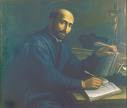









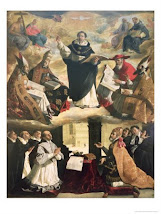
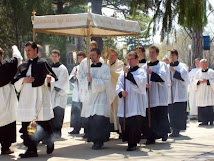

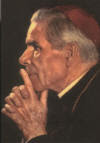

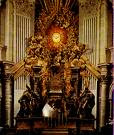
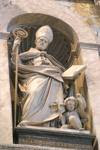



No comments:
Post a Comment